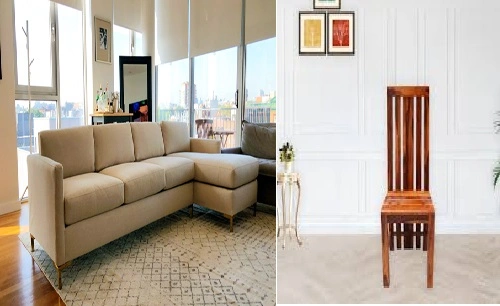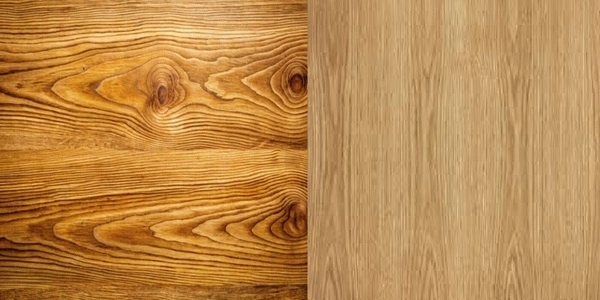When furnishing a home, one of the most critical decisions homeowners face is choosing between upholstered furniture and solid wood furniture. Each has its own unique appeal, offering different aesthetics, comfort levels, durability, and maintenance requirements. Whether you’re looking for a new sofa, dining chairs, or accent pieces, understanding the pros and cons of upholstered and solid wood furniture will help you make the right choice for your home.
In this article, we’ll explore the key differences between upholstered and solid wood furniture, focusing on durability, comfort, aesthetics, maintenance, cost, and the ideal uses for each type.
What is Upholstered Furniture?
Upholstered furniture refers to pieces that have padding, springs, webbing, and fabric or leather covers. Sofas, armchairs, headboards, and ottomans are classic examples of upholstered furniture. It’s favored for its comfort and versatility in design, making it an excellent choice for cozy, inviting interiors.
Advantages of Upholstered Furniture
- Comfort: Upholstered furniture provides superior comfort compared to solid wood pieces. The padding, cushions, and fabric create a soft, relaxing surface ideal for long hours of sitting or lounging.
- Versatile Design Options: Upholstered furniture comes in a wide variety of fabrics, colors, and patterns, allowing you to customize it to match your personal style and décor. From sleek leather to soft velvet, the options are endless.
- Warm and Inviting Look: Upholstered furniture adds warmth and softness to a space, making it feel cozy and welcoming. It’s perfect for living rooms, bedrooms, and family spaces where comfort is a priority.
- Safety: Upholstered furniture has no hard edges, making it a safe choice for homes with children or elderly family members who might be prone to falls.
Disadvantages of Upholstered Furniture
- Maintenance Challenges: Upholstered pieces can be difficult to clean, especially when spills or stains occur. Fabric upholstery absorbs dust, dirt, and pet hair, requiring regular vacuuming and occasional deep cleaning.
- Durability Concerns: Over time, fabric upholstery can wear out, fade, or tear, especially in high-traffic areas. While leather and high-performance fabrics are more durable, they still require care to maintain their appearance.
- Prone to Allergens: Upholstered furniture can harbor dust mites, pollen, and pet dander, which may be problematic for people with allergies.
- Higher Replacement Costs: If upholstery becomes damaged or outdated, reupholstering can be expensive.
What is Solid Wood Furniture?
Solid wood furniture is crafted from natural wood, such as oak, maple, walnut, or mahogany. This furniture is valued for its strength, timeless appeal, and long-lasting quality. Examples include dining tables, chairs, bed frames, and cabinets.
Advantages of Solid Wood Furniture
- Durability and Longevity: Solid wood furniture is incredibly durable and can last for generations with proper care. It’s resistant to daily wear and tear, making it ideal for high-traffic areas.
- Timeless Aesthetic: Solid wood pieces exude natural beauty and character, thanks to their unique grains, knots, and finishes. They can complement both traditional and modern interiors.
- Easy Maintenance: Solid wood furniture is easier to maintain than upholstered furniture. It can be cleaned with a damp cloth, and minor scratches or damage can be repaired through sanding and refinishing.
- Environmentally Friendly: When sourced responsibly, solid wood furniture is an eco-friendly choice. It is biodegradable, renewable, and often outlasts furniture made from synthetic materials.
- Adds Value: Solid wood furniture is considered a long-term investment because it retains its value. It can be refinished or repurposed over time, extending its life.
Disadvantages of Solid Wood Furniture
- Lack of Comfort
Solid wood furniture doesn’t provide the same level of comfort as upholstered pieces. For seating, additional cushions or pads are often required. - Weight and Bulk
Solid wood furniture is heavy and difficult to move, which can be inconvenient during rearrangements or relocations. - Susceptibility to Damage
Solid wood can warp, crack, or scratch over time if exposed to moisture, extreme temperatures, or heavy impacts. - Cost
High-quality solid wood furniture is often more expensive than upholstered alternatives due to the cost of materials and craftsmanship.
Upholstered vs. Solid Wood: Key Comparisons
| Feature | Upholstered Furniture | Solid Wood Furniture |
|---|---|---|
| Comfort | Soft, cushioned, and cozy | Firm, hard surface; requires padding |
| Durability | Moderate; fabric can wear or fade | Highly durable; lasts for decades |
| Maintenance | Harder to clean; requires deep cleaning | Easy to clean; scratches are repairable |
| Aesthetic Appeal | Soft, versatile, and colorful | Natural, timeless, and elegant |
| Cost | Affordable to mid-range | Higher upfront cost |
| Weight | Lightweight and portable | Heavy and sturdy |
| Lifespan | 10-20 years, depending on fabric | 50+ years with proper care |
| Allergens | Can trap dust and dander | Hypoallergenic; easy to clean |
Where to Use Upholstered Furniture
Upholstered furniture works best in spaces where comfort and coziness are essential.
- Living Rooms: Sofas, armchairs, and ottomans create a relaxing and inviting environment for lounging and entertaining.
- Bedrooms: Upholstered headboards and benches add a soft, luxurious touch.
- Family Rooms: Ideal for comfort when watching TV, playing games, or spending time with family.
Where to Use Solid Wood Furniture
Solid wood furniture is perfect for areas where durability, functionality, and longevity are priorities.
- Dining Rooms: Solid wood dining tables and chairs can withstand daily use while adding an elegant touch.
- Bedrooms: Wooden bed frames, dressers, and nightstands provide lasting beauty and durability.
- Kitchens: Wooden cabinets and islands add a timeless look to the heart of your home.
- Home Offices: Desks and bookshelves crafted from solid wood offer strength and sophistication.
Which One is Right for You?
- Choose Upholstered Furniture If:
- Comfort and coziness are your top priorities.
- You want versatile designs, colors, and fabrics.
- Your furniture will be in spaces where people sit for long periods.
- Choose Solid Wood Furniture If:
- You prioritize durability, longevity, and value.
- You want furniture that exudes timeless beauty.
- Your focus is on low-maintenance pieces for high-traffic areas.
Final Thoughts
Both upholstered furniture and solid wood furniture offer unique benefits, and the best choice depends on your needs, preferences, and lifestyle. Upholstered furniture excels in providing comfort and versatility, making it ideal for living spaces and relaxation zones. On the other hand, solid wood furniture offers unmatched durability, classic beauty, and long-term value, making it perfect for dining areas, bedrooms, and high-traffic spaces.
By balancing comfort, functionality, and style, you can choose the right type of furniture that will enhance your home and last for years to come.


